Kids NEED time outdoor to play and explore! Here are seven EASY ways we can cultivate wonder in their lives (and ours too!).
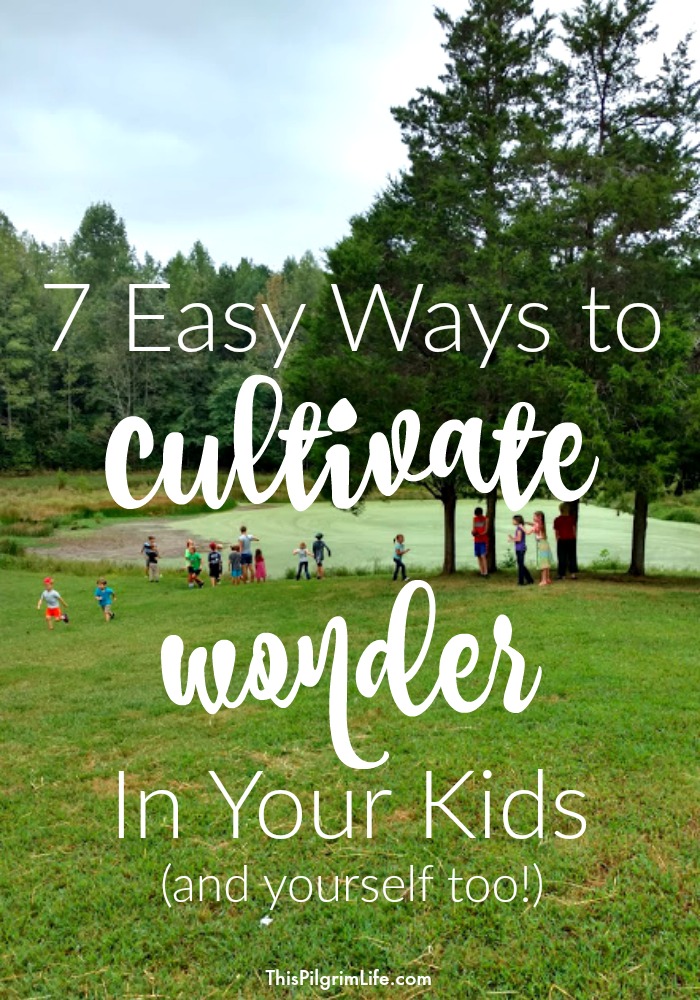
Last week I shared a list of thirty grab-and-go picnic foods with the hope that we will all find it easier to enjoy being outdoors together this spring and summer.
Many of the benefits of picnicking are obvious– the fresh air, the important exposure to vitamin D, the time together away from distractions, the chance for our kids to burn some energy.
All of these reasons are more than enough motivation to pack a picnic and head outdoors. But if we stop at spreading a blanket and enjoying a meal in the sun, we could be missing out on something wonderful!
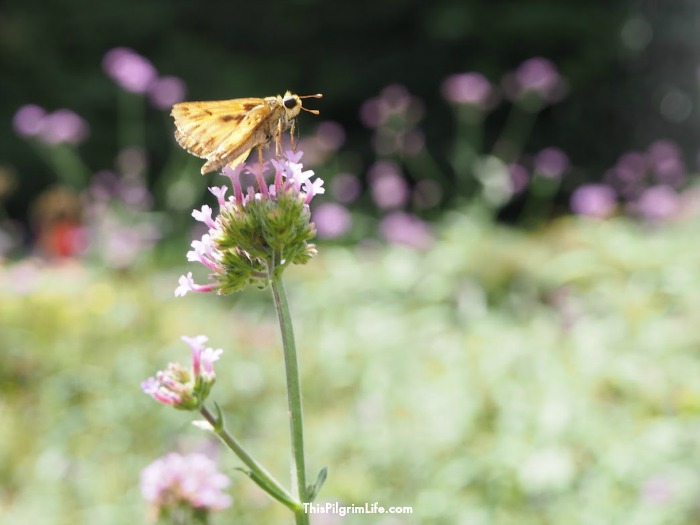
God has given us an incredible, WONDER-FUL, creation to observe and enjoy! Spending time in nature is so beneficial for us, body, soul, and mind. We encounter God through His creation, learning of His power and creativity. We examine a butterfly or watch flowers bud and bloom, and realize that God delights in beauty and order. We see the seasons change and thank God for the provision of times for rest, for growth, and for fun.
In addition to nurturing an understanding of the world in which God is at the center, time outdoors is simply physically and mentally refreshing. It is a much-needed break from the responsibilities and stimulation found in every other area of our busy lives.
A slow, meandering walk through the woods, along a beach, or around a pond is exactly what we all could use more of in our lives.
This season, I encourage you to slow down and nurture habits in both your kids and yourselves to observe, marvel, and notice. The opportunity is there whether you are in your backyard or a park in the middle of a city or a field in the country!
7 Easy Ways to Cultivate Wonder in Your Kids (And Yourself Too!)
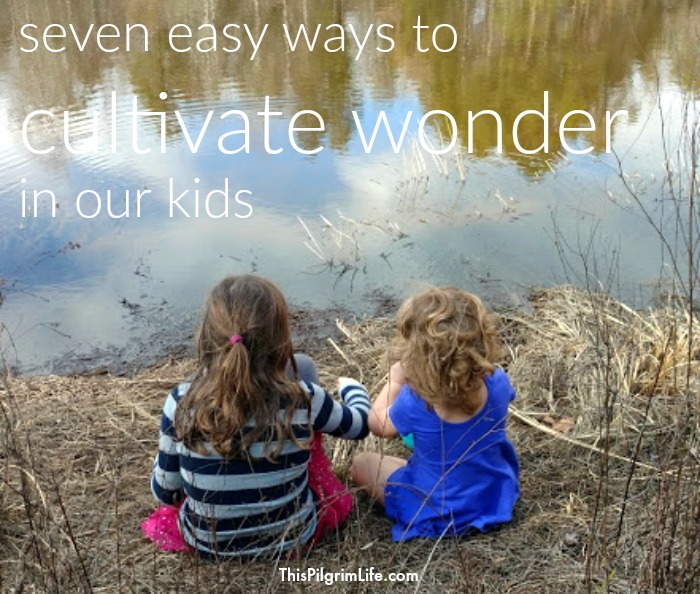
1. Model interest and enthusiasm.
Parents, our own interest and enthusiasm is at the top of the list! The single most natural and effective way to raise kids who look on the world with wonder, who feel comfortable out-of-doors, and who get excited to explore and observe is to be that way ourselves.
You don’t need to be able to name all the trees in your woods, or be able to distinguish between various bird calls. All that you need is a desire to learn and your kids will catch on.
2. Start at home.
The home is an excellent starting point for learning to observe and enjoy nature because there is less pressure to stay out for long and little concern of forgetting to pack something you need.
Start by observing a pet or the flowers in your yard. Hang a few bird feeders from a tree and watch who comes to eat each day. Take a walk through the woods or down your sidewalk and notice how many types of trees you pass or how many wild animals you encounter.
3. Invest in lightweight, kid-friendly nature guides.
My husband used to laugh at me because I would always try to sneak in a few nature guides into the backpack one of us would be carrying on a walk. I was convinced we would use them and he was convinced the weight wasn’t worth it.
Well, we didn’t get rid of those heavier guides, but we did invest in several pocket guides which can easily be slipped into a pocket or added to a pack without noticing any extra pounds.
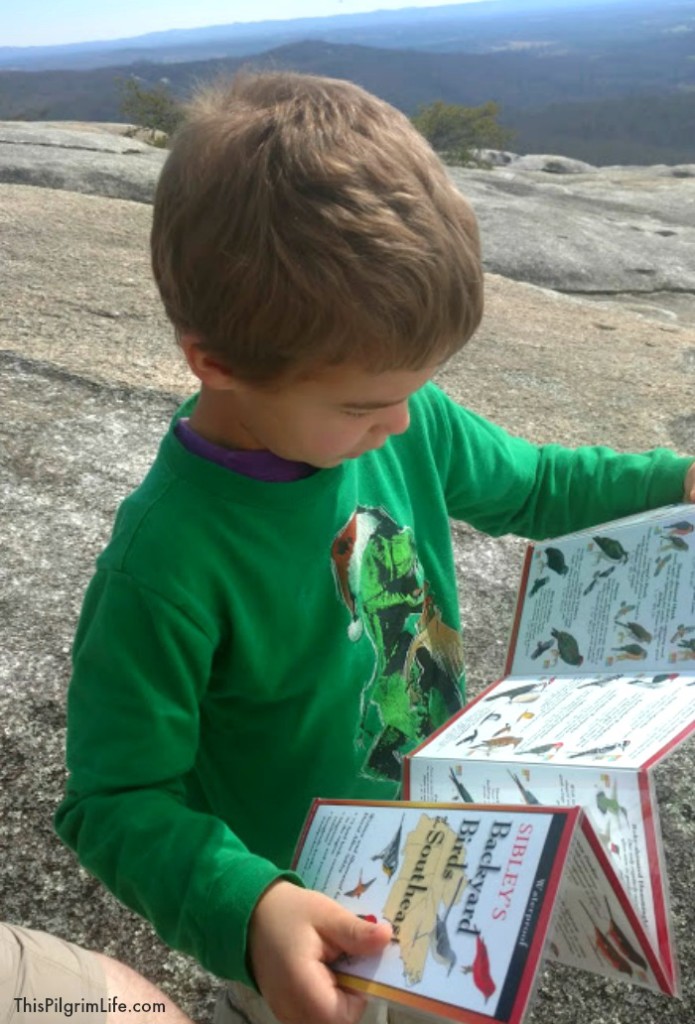
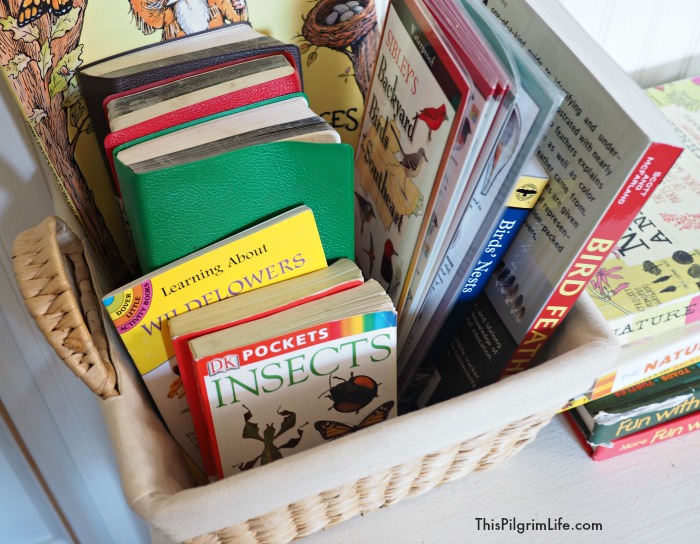
The DK pocket guides are some of our favorites. We often bring along ones on bugs and rocks. I also love laminated, fold-up guides because they are so easy to use without presenting an overwhelming amount of information. I am still building my collection, but now I have one on birds, shells, and wildflowers.
Focus on finding guides for your particular area or region. Kids will love using them and bringing them along on a nature walk. Reference books that you can use after you return are great, as well!
4. Teach attention and observation.
The habit of attention is a muscle that can be strengthened (or weakened) over time. Never before have we had so many things vying for our attention in any given moment, and yet how difficult it is to pay focused attention to anything for more than a couple of minutes!
Being in nature is an excellent way to strengthen our habits of attention as we quiet ourselves and practice using our senses to experience what is around us. (This habit will serve our children for all of their lives!)
Begin with one or two minutes and work up to longer periods of time. Practice being still and taking in all that you can with all of your senses.
We can be tempted to fill the time we spend outdoors with our kids with little lessons and our own observations, but we need to give our children the gift of making discoveries for themselves.
Let the time be one of fun and mutual enjoyment and the learning will take care of itself.
5. Start nature journals and record what you find.
For a long time, I put off starting nature journals with my kids because I had made it into a bigger deal than it needed to be. I felt like if I wasn’t doing to “right”, then I shouldn’t do it at all.
But that is soooo wrong! Just get started, trust the process, and let go of the pressure to do it like everyone else.
Essentially, there are three basic principles with nature journaling: record what you see, carefully and precisely; use both words and illustrations; and, when possible, try to use real material to copy.
The most important thing is slowing down, paying close attention, and just doing it!
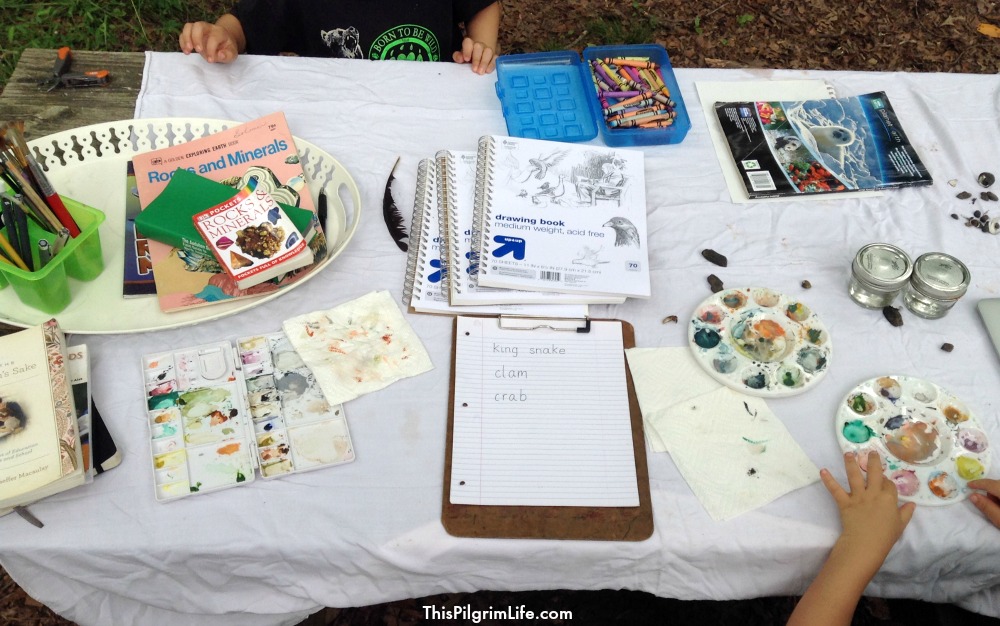
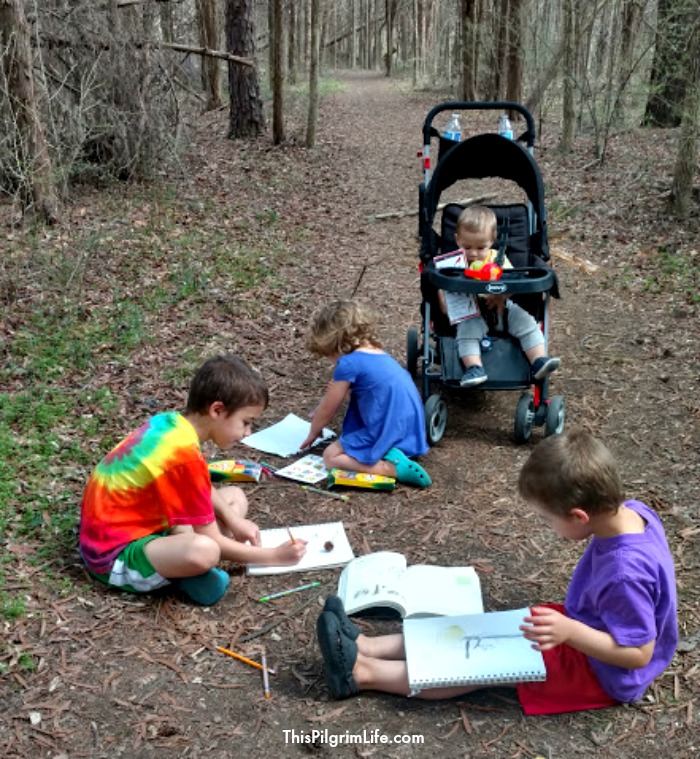
6. Keep a collection.
Kids love to collect things. Bringing a few special finds* home from a walk encourages ownership and gives more opportunity to learn and explore once kids are home.
If you ever visit our home, you will certainly be accosted greeted by my children eagerly holding up their rock collection, or leading you to our nature shelves. Their pride is evident and they LOVE showing off their collected treasures. Usually, they can also tell you where they found it and give an accompanying detail or two.
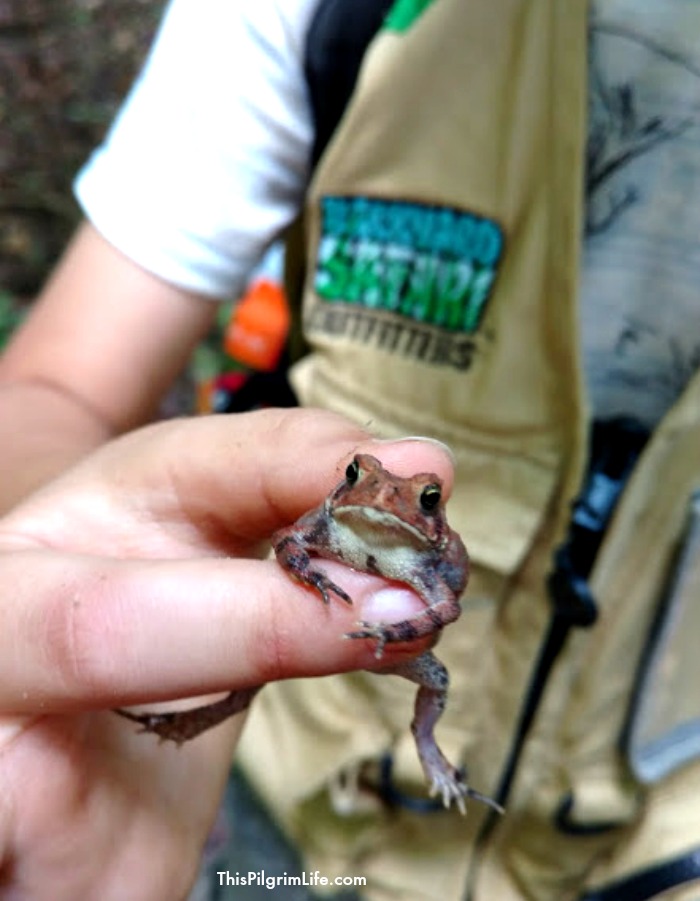
Give your kids a small plastic bag or a small hard container for tucking away a seed, feather, dead bug, or whatever other small item catches their eye while you are out. (Explorer vests can be another fun option!)
Once you are home, try to identify the item together, maybe record it in your nature journal, and give it a place to be admired later on (see next point).
If you are exploring at home, an empty terrarium kept in the backyard or garage is an easy way to observe creatures for longer periods of time. Our terrarium has been home to spiders, lizards, toads, snakes, and more.
*A word to the wise: some items, like acorns and nuts, can bring along tiny insects and worms into your home. Even so, in our years of collecting, we have never found anything unwanted in our finds. Just be careful and aware!
7. Display nature finds and nature books in accessible areas at home.
“A place for everything and everything in it’s place” is true for nature finds too! If you don’t want “special rocks” and gumballs and dead bugs laying around your house, then be proactive in giving those treasures a home.
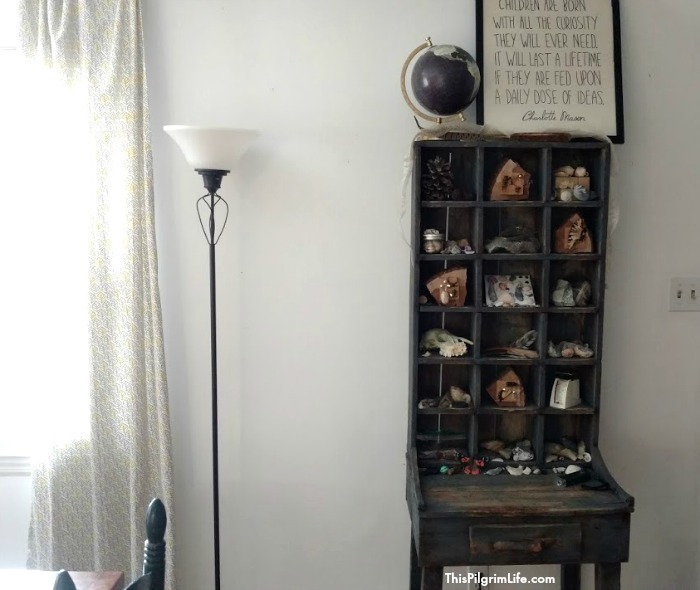
I have found clear craft boxes (something like this) to be a safe place to store many nature finds. They can be admired or put away, neither being inaccessible or in the way. For a long time, we displayed our favorite nature finds in a repurposed shadow box on our wall. Nowadays, our collection is displayed on a hand-built piece of furniture.
Similarly, if you keep your collection of nature guides and nature books out in a location that is readily seen, they will be much more likely to be referenced and enjoyed, (not to mention, you will be less likely to forget to grab them before you go out).
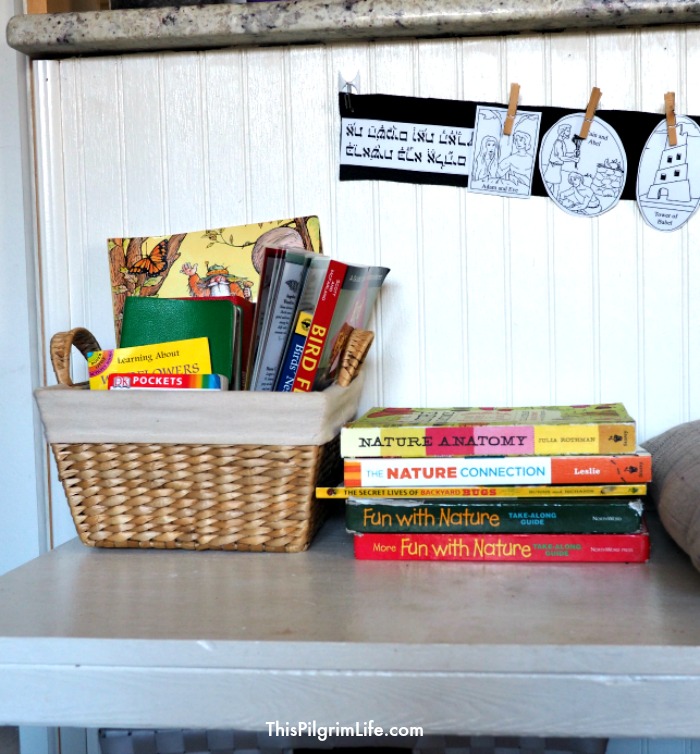
Our collection includes both kid-friendly and adult nature guides (we all enjoy looking at both), picture books centered on exploring nature, and nature-based activity books.
A few of our favorites are:
- Nature Anatomy :: this book has a much wider scope than many nature guides, but it is a great resource and fun to look at
- The Nature Connection :: an interactive workbook with seasonal activities
- the Fun with Nature series :: these books are beautifully illustrated, packed with short nuggets of information, and are very kid-friendly
- Crinkleroot series :: lovely series by Jim Arnosky. You can find a few on Amazon or look for them at used bookstores

I will end with these lovely words that a great friend shared on Instagram this week. I love the idea of being a “wonder worker”.
I am a wonder worker, working to draw my kids’ attention to that which is true, good, and beautiful, while pointing out the wonder around us. Even within the most mundane of tasks, glory and wonder exist.
I am a wonder worker, pursuing to live a life myself with eyes to see all the wonder around me, so as to be an example for my kids to emulate.
With each word read, each breath breathed, each blossom on the tree, and even in each mess, I see it and know my God is the author of truth, goodness, beauty, and wonder.
How do you cultivate wonder in your family? How do you find time to spend outdoors with your kids?
Thanks for the activity book suggestions! I want to keep those in mind for Little Dude as he gets older! What you say here reflects my parenting philosophy, too!